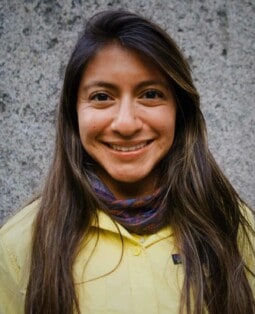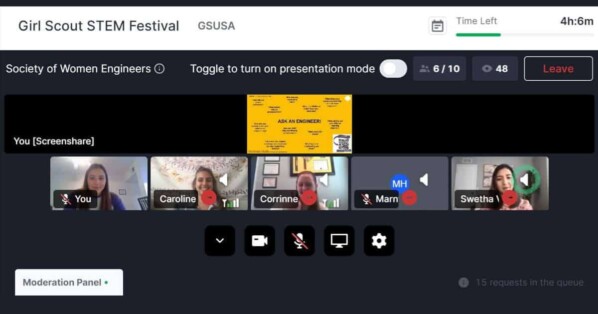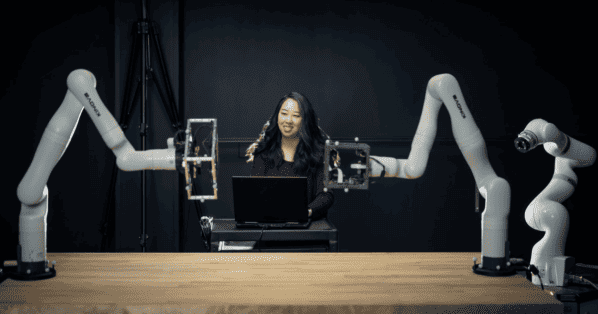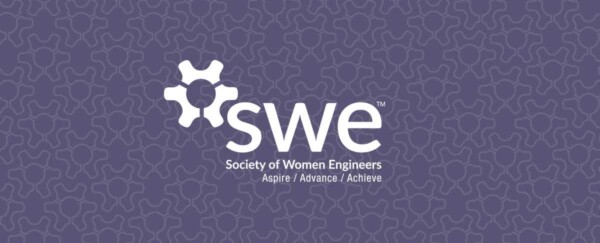“Engineer Stays on Course With Help From Mentors” was written by Sandra Guy, SWE Magazine Contributor.
When SWE Magazine last spoke with Victoria Ibarra, she was a senior at the University of Texas at Austin who had found a welcoming place at the university’s Women In Engineering’s “Introduce a Girl to Engineering Day” event.

Ibarra, a San Antonio native who is the first in her family to earn an undergraduate engineering degree, said a family friend heard about the program, so she, her best friend and her two younger sisters attended the “Introduce a Girl to Engineering Day” event at the UT-Austin campus.
“I thought it was super cool that we made chairs out of paper and duct tape, and we could sit on them,” she said of her field trip in 6th grade.
Ibarra also was intrigued by work she saw there on DNA and prosthetics.
When Ibarra looked around for a college program suited to her, she realized that her interest laid in architectural engineering—and UT-Austin once again proved the right destination.
She again spent a day at another Women in Engineering Program event, and after talking with UT-Austin engineering students and faculty, decided to enroll.
Ibarra said the university culture and her parents’ encouragement underscored her decision to become an engineer.
“I never had anyone telling me I couldn’t do it,” she said, despite never believing that math was her strongest subject. “You don’t have limitations in your head unless someone places them there.”
“I never had anyone telling me I couldn’t do it. You don’t have limitations in your head unless someone places them there.”
Mentors and peer engineering students have made a huge difference in her success, said Ibarra, who is now in her last year of graduate school in the Energy and Earth Resources program at UT.
Starting with her freshman year, Ibarra got involved in the Women in Engineering Program’s PAL (Peer Assistance Leaders) program, which pairs freshmen and new transfer engineering students with a second-, third- or fourth-year female volunteer, helping the new students transition into UT-Austin’s Cockrell School of Engineering. Students are automatically matched to a PAL in their major.
Ibarra said her PAL was vital to her college success, since she was able to ask her upperclasswoman PAL questions about which classes and professors to choose and which groups and organizations to join.
Ibarra was so impressed, she became a PAL to a freshman engineering student when she was a sophomore, and interned with the PAL program.
She said she has also benefited from having graduate student mentors in her research-lab work because they’ve helped her understand the importance of developing close relationships with her professors.
“It can be scary to talk to professors,” Ibarra said. “The graduate students were a point of contact who were able to make introductions for me,” she said.
They’ve influenced Ibarra’s decision to pursue a master’s degree focused on conserving energy and water resources. Her goal is to work for an agency that oversees aquifers or other water resources.
The consistent encouragement has helped Ibarra remain confident in a major that’s about half men and half women.
“I watched a TED talk about women in STEM fields that said women are taught to feel they have to be perfect, whereas guys just keep trying until they get it,” Ibarra said. “But my experience has been knowing there are resources and people willing to help if you’re humble enough to ask. There are plenty of people willing to be your mentor and to help you be successful. It’s not about putting yourself down. It’s about reminding yourself an engineering degree isn’t easy, and everyone is going to struggle.”
“There are plenty of people willing to be your mentor and to help you be successful. It’s not about putting yourself down. It’s about reminding yourself an engineering degree isn’t easy, and everyone is going to struggle.”
Indeed, Ibarra is becoming a full-fledged role model in her own right. Her younger sister, Angelina, is now a freshman at the University of Texas, pursuing her degree in electrical and computer engineering.
The National Girls Collaborative Project, a not-for-profit aimed at reaching girls and boys with limited access to STEM resources, underscores that intervention is vital to keep girls engaged in STEM and to maintain their ambitions.
The Collaborative Project partners with YMCAs, YWCAs and Boys & Girls clubs in communities that serve girls of color, those with disabilities and others who are underserved in STEM activities.
“We work closely with the families,” said Karen Peterson, the Collaborative Project’s CEO. The Project arranges for female professional engineers and college students majoring in engineering to address concerns from families with no higher education experience about their children going away to college, for example.
The Project also links STEM professionals and college students with girls interested in engineering in a program called FabFems.
Peterson also marveled at how girls in the program want to connect at a basic level, whether it’s attending a meet-up event over pizza or finding out their role model’s favorite color or whether she owns a pet.
“They want to find out (the role models) are real people,” she said.
The resources needed to get girls involved in STEM, though government or corporate funded, can be replicated at little to no cost if necessary, experts say.
Science kits, for example, include lesson plans featuring citizen scientists studying bugs, as well as materials for the activities, such as magnifying glasses and paper cups.
Students can use low- to no-cost resources such as shoe boxes, recycled paper, plastic or paper cups donated by a local company, paint stirs available at hardware stores, and toilet paper or paper towel rolls that are easily collected by volunteers.
It’s really all about engaging the kids and making it easy for educators.
“Operation SMART” offers another opportunity. It’s a Girls Inc. initiative that uses hands-on activities to boost girls’ enthusiasm for and skills in science, technology, engineering and mathematics (STEM). Participants explore, persist, ask questions, solve problems and spend time with women and men pursuing STEM careers. It is aimed at convincing girls to view these careers as exciting and realistic options for themselves.
Girls Inc. retired President and CEO Judy Vredenburgh said the program is the kind of “whole girl development” approach that the organization is known for.
“We help girls to overcome stereotypes by teaching them to value their whole selves, and to find their inherent strengths,” Vredenburgh said in the earlier interview. “We encourage girls to push past obstacles, including the fact that certain fields are not for them. We encourage them not only academically but in healthy living and life-skills development.”
Girls Inc. ensures that the girls have mentors and role models to help them aspire to careers in which they can soar, she said.
“We introduce them to STEM fields and give them messages that these careers can be creative, can involve helping others and that they can be feminine and a rocket scientist at the same time,” Vredenburgh said in the earlier interview.
For example, girls going into the eighth grade get to meet engineers, lab scientists, biochemists, architects and other professionals so they can find out whether those careers could be exciting and appropriate for them, she said.
“We create an all-girl safe environment with a set of high expectations and mutual respect,” Vredenburgh said.
Girls, Inc., partners with local schools in low-income areas, where the schools set up dedicated space for the program.






